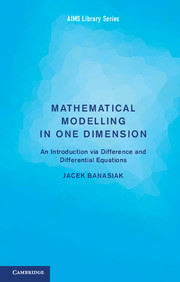2 - Basic difference equations models and their analysis
Published online by Cambridge University Press: 05 March 2013
Summary
In this chapter we first introduce discrete mathematical models of phenomena happening in the real world. We begin with some explanatory words. Apart from the simplest cases such as the compound interest equation, where the equation is a mathematical expression of rules created by ourselves, the mathematical model attempts to find equations describing events happening according to their own rules, our understanding of which is far from complete. At best, the model can be an approximation of the real world. This understanding guides the way in which we construct the model: we use the principle of economy (similar to the Ockham razor principle) to find the simplest equation which incorporates all relevant features of the modelled events. Such a model is then tested against experiment and only adjusted if we find that its description of salient properties of the real phenomenon we try to model is unsatisfactory.
This explains why we often begin modelling by fitting a linear function to the data and why such linear, or only slightly more complicated, models are commonly used, although everybody agrees that they do not properly describe the real world. The reason is that often they supply sufficient, if not exact, answers at a minimal cost. One must remember, however, that using such models is justified only if we understand their limitations and that, if necessary, are ready to move in with more fine-tuned ones.
Information
- Type
- Chapter
- Information
- Mathematical Modelling in One DimensionAn Introduction via Difference and Differential Equations, pp. 18 - 36Publisher: Cambridge University PressPrint publication year: 2013
